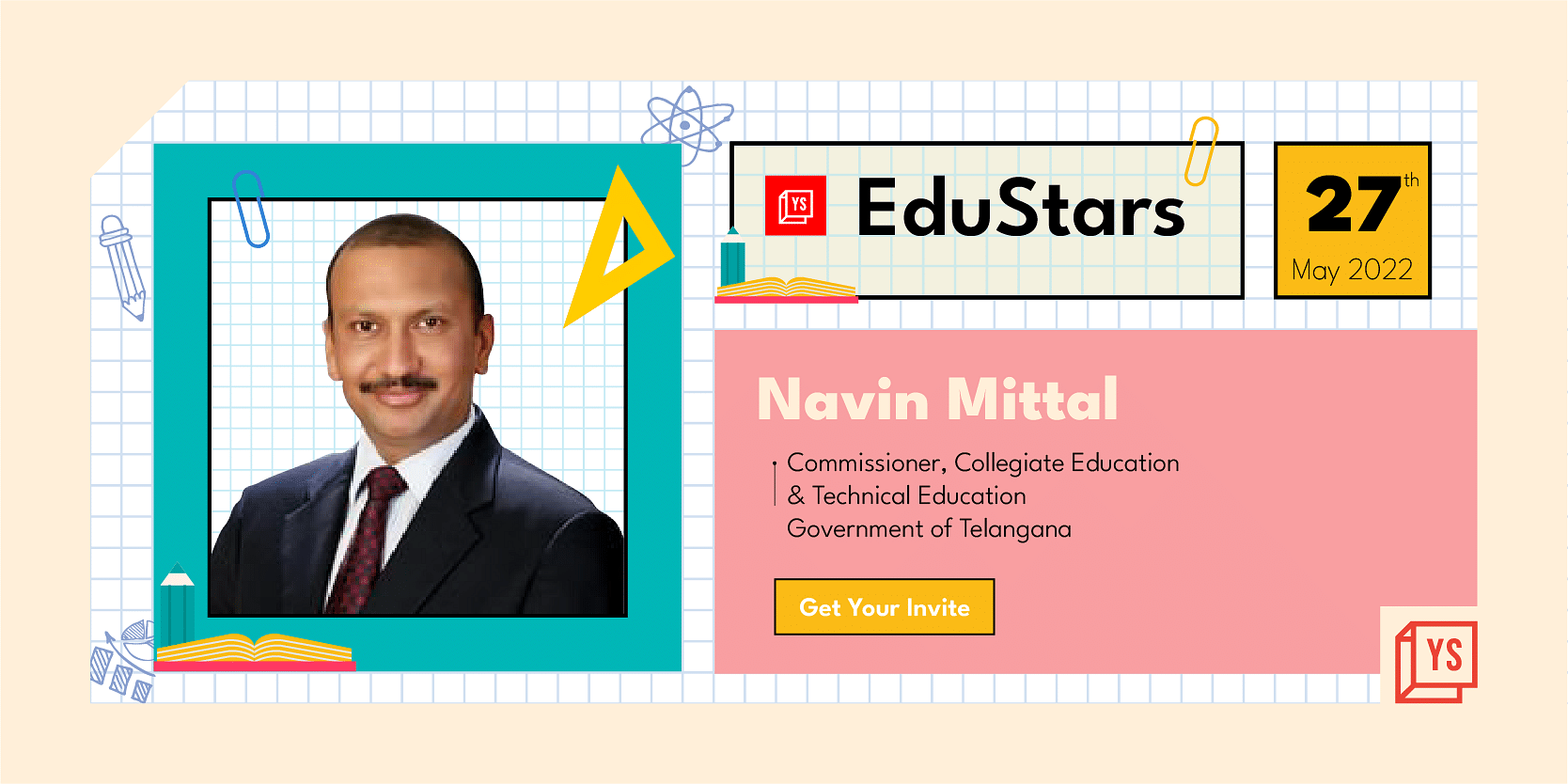Having contributed to reforming and reengineering systems and processes all his life, Navin Mittal has been harbouring that reform in the education sphere recently as the Commissioner of Technical and Collegiate Education, Govt. of Telangana.
At YourStory’s EduStars 2022 event which focuses on the education sector and brings together leading voices in the industry on a singular platform, Navin says that there has been a dramatic transformation that has happened in the last 10 to 20 years—both in the education, employment, and entrepreneurship space. Having seen India grow from a $300 million economy way back in 1991 to close to a $3 billion economy today, he is optimistic about India and its growth story.
A few years after integrating employability skills and soft skills into the Telangana curriculum, he prides on the dramatic change in students’ quality that comes out of the system now.
“From the periphery, it became the core,” says Navin.
The New Education Policy has taken their efforts one step further by introducing multidisciplinary education, an academic bank of credit, and multiple entry and exit. He adds that the academic bank of credit puts India right at the top of the global list through the flexibility it provides to students.
NEP’s story for the last two years—there’s been some successes, some work in progress, and some initiatives yet to take shape. “The policy would bring together the fragmented higher education system and break the silos that exist in our system today; there is capacity, so we are not chasing numbers but the quality of institutions”, says Navin.
Taking the example of Telangana, where despite having 4 lakh seats, degree colleges have only 2.2-2.5 lakh students. Similar is the story for engineering colleges, where only 70k students take up admission despite having 1.5 lakh seats.
Financing for higher education
Addressing the needs of this sphere will require an increase in public investment. Current overall investment, including both state and private, can be estimated at 1.5-2 percent of India’s GDP. Recommendations by global multilateral institutions of close to 6 percent mandate a greater push from both state and central governments.
Interesting innovations have come up in financing
Central Government is providing funding to encourage innovation at the Higher Education level through the HEFA, a joint venture of the MoE, Government of India, and Canara Bank to finance capital assets creation in premier educational institutes Navin praises this initiative and adds that a combination of centre and state at the state level is also required.
Telangana: A torchbearer of education to other states
One of the crucial initiatives in Telangana is enormous investments that have been made in higher education through scholarships. There’s a provision where 100 percent of students belonging to SC/ST get a full scholarship from the Govt. This has caused Telangana to be 11 percent higher than the national average in terms of GER.
“Talking about quality is useless until students and Institutions connect together.”
Speaking of tech advancements in the state, Navin says that they’ve moved beyond physical files, and most public institutions are on e-office. Initiatives like biometric attendance, college administration information management system, digital evaluation system, and an upcoming University management system have transformed the education system in Telangana.
(With inputs from Debrima Saha)






![Read more about the article [Weekly funding roundup Dec 4-8] Venture capital inflow improves marginally](https://blog.digitalsevaa.com/wp-content/uploads/2023/10/funding-lead-image-1669386008401-300x150.jpg)



